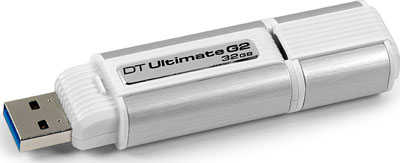Everyone wants to transfer data at high rate. This article will tell you about transferring data with USB 3.0 Flash Drive on USB 2.0 Port.
The Universal Serial Bus popularly shortened, as USB has been a standard port for most of the gadget peripherals especially those tiny flash drives that you use to keep your reports and presentations while taking printouts or copying some music files to your friend. USB flash drives are faster, spacious, and reliable and are easy to carry around. Although costlier than CDs and DVDs, they are safe and last long.

The New USB 3.0 Standard
USB data transfer speeds had increased since the USB 1.1 version debuted in 1996. The standard USB 2.0 has a speed less than 0.5Gbps while the updated USB 3.0 standard will give you speeds up to 4.8Gbps.
The higher speed will allow you to use devices that require a high bandwidth for smooth and fast operation like external hard disks, Blu-ray burners, webcams, and streaming from USB connected peripherals.
Although most USB flash drive manufacturers are using USB 3.0 standard but device manufacturers, have not brought the standard device entirely to computers and other mobile gadgets. Therefore, the question is how will your USB flash drives built on the USB 3.0 standard work on the USB 2.0 ports?
How to Transfer data of USB 3.0 Flash Drives using USB 2.0 Port
The data transfer speed of the 3.0 model is better than 10 times that of the USB 2.0 standard. Along with the enhanced data transfer, speed the bus speed has also improved. This means that the hardware will be more responsive.
The 3.0 standard, flash drives can supply more power for connected peripherals. Charging devices like mobiles using the USB cable takes lesser time.
The USB 3.0 flash drive is backward compatible with 2.0 ports, which means that you can use a 3.0 flash device on a 2.0 port. However, that does not give you its maximum performance and speed. Moreover, if the USB 3.0 flash drive is used with 3.0 interfaces then it will transfer data at a 10X rate more than the USB 2.0 port.
Instructions for Transferring Data
Transferring data from your flash drive is extremely easy because USB flash drives are plug-and-play devices- you plug it in, use it and take it out when you do not want it.
- Plugging to a USB port will display the USB drive icon on My Computer in case of Windows and the desktop in case of Mac.
- Now Copy or transfer data from your computer to the USB flash drive or to any of its folders.
- After you are done, drag the USB drive icon to the trash icon which will then transform into the eject icon if you are using Mac.
- If you are using Windows, click on Safely Remove Hardware and click Safely Remove Hardware. Now you can transfer data to any other computer.
In short, the speed and performance of USB 3.0 flash drives have been improved. The key factor here is that USB 3.0 flash drives can be used on a USB 2.0 port, as it is backward compatible. Note that you could not use your old 2.0 flash drive on the 3.0 port you need to use the 2.0 port itself. Another thing is that even if you have a 3.0 flash drive, you will not get compelling speeds if you have the 2.0 ports only. Moreover, higher bandwidth applications like USB webcams, external hard disks, video adaptors etc work better on the USB 3.0 port.

